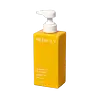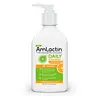What's inside
What's inside
 Key Ingredients
Key Ingredients

 Benefits
Benefits

 Concerns
Concerns

 Ingredients Side-by-side
Ingredients Side-by-side

Water
Skin ConditioningCetyl Alcohol
EmollientGlycerin
HumectantDimethicone
EmollientButyrospermum Parkii Butter
Skin ConditioningCeteareth-20
CleansingTetrahexyldecyl Ascorbate
AntioxidantAscorbic Acid
AntioxidantCurcuma Longa Root Extract
MaskingFerulic Acid
AntimicrobialTerminalia Ferdinandiana Fruit Extract
AntioxidantPyrus Malus Fruit Extract
Skin ConditioningZingiber Officinale Root Extract
MaskingAloe Barbadensis Leaf Juice
Skin ConditioningPanax Ginseng Root Extract
EmollientTocopheryl Acetate
AntioxidantHelianthus Annuus Extract
EmollientOryza Sativa Bran Extract
Skin ConditioningRosmarinus Officinalis Leaf Extract
AntimicrobialTocopherol
AntioxidantCetearyl Ethylhexanoate
EmollientIsopropyl Myristate
EmollientCetearyl Phosphate
Skin ConditioningGlyceryl Stearate
EmollientSynthetic Beeswax
Emulsion StabilisingCarbomer
Emulsion StabilisingXanthan Gum
EmulsifyingTetrasodium Glutamate Diacetate
Parfum
MaskingPhenoxyethanol
PreservativeEthylhexylglycerin
Skin ConditioningCaprylyl Glycol
EmollientHexylene Glycol
EmulsifyingSodium Hydroxide
BufferingLimonene
PerfumingLinalool
PerfumingWater, Cetyl Alcohol, Glycerin, Dimethicone, Butyrospermum Parkii Butter, Ceteareth-20, Tetrahexyldecyl Ascorbate, Ascorbic Acid, Curcuma Longa Root Extract, Ferulic Acid, Terminalia Ferdinandiana Fruit Extract, Pyrus Malus Fruit Extract, Zingiber Officinale Root Extract, Aloe Barbadensis Leaf Juice, Panax Ginseng Root Extract, Tocopheryl Acetate, Helianthus Annuus Extract, Oryza Sativa Bran Extract, Rosmarinus Officinalis Leaf Extract, Tocopherol, Cetearyl Ethylhexanoate, Isopropyl Myristate, Cetearyl Phosphate, Glyceryl Stearate, Synthetic Beeswax, Carbomer, Xanthan Gum, Tetrasodium Glutamate Diacetate, Parfum, Phenoxyethanol, Ethylhexylglycerin, Caprylyl Glycol, Hexylene Glycol, Sodium Hydroxide, Limonene, Linalool
Water
Skin ConditioningAmmonium Lactate
BufferingSqualene
EmollientNiacinamide
SmoothingGlycerin
HumectantPropanediol
SolventCoconut Alkanes
EmollientSodium Lactate
BufferingPotassium Lactate
BufferingCetearyl Alcohol
EmollientCandelilla/Jojoba/Rice Bran Polyglyceryl-3 Esters
EmulsifyingGlyceryl Stearate
EmollientAminopropyl Ascorbyl Phosphate
AntioxidantSodium Stearoyl Lactylate
EmulsifyingHydroxyethyl Acrylate/Sodium Acryloyldimethyl Taurate Copolymer
Emulsion StabilisingGlycereth-5 Lactate
EmollientPolysorbate 60
EmulsifyingPEG-7 Trimethylolpropane Coconut Ether
EmulsifyingPolyisobutene
Xanthan Gum
EmulsifyingCitric Acid
BufferingSodium Hydroxide
BufferingSodium Benzoate
MaskingDisodium EDTA
Water, Ammonium Lactate, Squalene, Niacinamide, Glycerin, Propanediol, Coconut Alkanes, Sodium Lactate, Potassium Lactate, Cetearyl Alcohol, Candelilla/Jojoba/Rice Bran Polyglyceryl-3 Esters, Glyceryl Stearate, Aminopropyl Ascorbyl Phosphate, Sodium Stearoyl Lactylate, Hydroxyethyl Acrylate/Sodium Acryloyldimethyl Taurate Copolymer, Glycereth-5 Lactate, Polysorbate 60, PEG-7 Trimethylolpropane Coconut Ether, Polyisobutene, Xanthan Gum, Citric Acid, Sodium Hydroxide, Sodium Benzoate, Disodium EDTA
Ingredients Explained
These ingredients are found in both products.
Ingredients higher up in an ingredient list are typically present in a larger amount.
Glycerin is already naturally found in your skin. It helps moisturize and protect your skin.
A study from 2016 found glycerin to be more effective as a humectant than AHAs and hyaluronic acid.
As a humectant, it helps the skin stay hydrated by pulling moisture to your skin. The low molecular weight of glycerin allows it to pull moisture into the deeper layers of your skin.
Hydrated skin improves your skin barrier; Your skin barrier helps protect against irritants and bacteria.
Glycerin has also been found to have antimicrobial and antiviral properties. Due to these properties, glycerin is often used in wound and burn treatments.
In cosmetics, glycerin is usually derived from plants such as soybean or palm. However, it can also be sourced from animals, such as tallow or animal fat.
This ingredient is organic, colorless, odorless, and non-toxic.
Glycerin is the name for this ingredient in American English. British English uses Glycerol/Glycerine.
Learn more about GlycerinGlyceryl Stearate is a mix of glycerin and stearic acid.
It is used to stabilize the mixing of water and oil ingredients. By preventing these ingredients from separating, it can help elongate shelf life. It can also help thicken the product's texture.
As an emollient, it helps soften skin and supports barrier-replenishing ingredients.
In cosmetics, Glyceryl Stearate is often made from vegetable oils or synthetically produced.
This ingredient may not be fungal-acne safe
Fun fact: The human body also creates Glyceryl Stearate naturally.
Learn more about Glyceryl StearateSodium Hydroxide is also known as lye or caustic soda. It is used to adjust the pH of products; many ingredients require a specific pH to be effective.
In small amounts, sodium hydroxide is considered safe to use. However, large amounts may cause chemical burns due to its high alkaline.
Your skin has a natural pH and acid mantle. This acid mantle helps prevent harmful bacteria from breaking through. The acid mantle also helps keep your skin hydrated.
"Alkaline" refers to a high pH level. A low pH level would be considered acidic.
Learn more about Sodium HydroxideWater. It's the most common cosmetic ingredient of all. You'll usually see it at the top of ingredient lists, meaning that it makes up the largest part of the product.
So why is it so popular? Water most often acts as a solvent - this means that it helps dissolve other ingredients into the formulation.
You'll also recognize water as that liquid we all need to stay alive. If you see this, drink a glass of water. Stay hydrated!
Learn more about WaterXanthan gum is used as a stabilizer and thickener within cosmetic products. It helps give products a sticky, thick feeling - preventing them from being too runny.
On the technical side of things, xanthan gum is a polysaccharide - a combination consisting of multiple sugar molecules bonded together.
Xanthan gum is a pretty common and great ingredient. It is a natural, non-toxic, non-irritating ingredient that is also commonly used in food products.
Learn more about Xanthan Gum